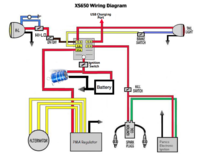avenue
push.
maybe the cap./fuse is more like the transformer, the key being the A/C disconnect, and the six buss fuse panel is like the house's fuse panel.
either way, the transformer has a fuse (and blows up in a big way if something goes wrong). you want the fuse to be on the same line from the cap/batt to the key and beyond, with no other path.
either way, the transformer has a fuse (and blows up in a big way if something goes wrong). you want the fuse to be on the same line from the cap/batt to the key and beyond, with no other path.




 ...(sorry!)
...(sorry!)

